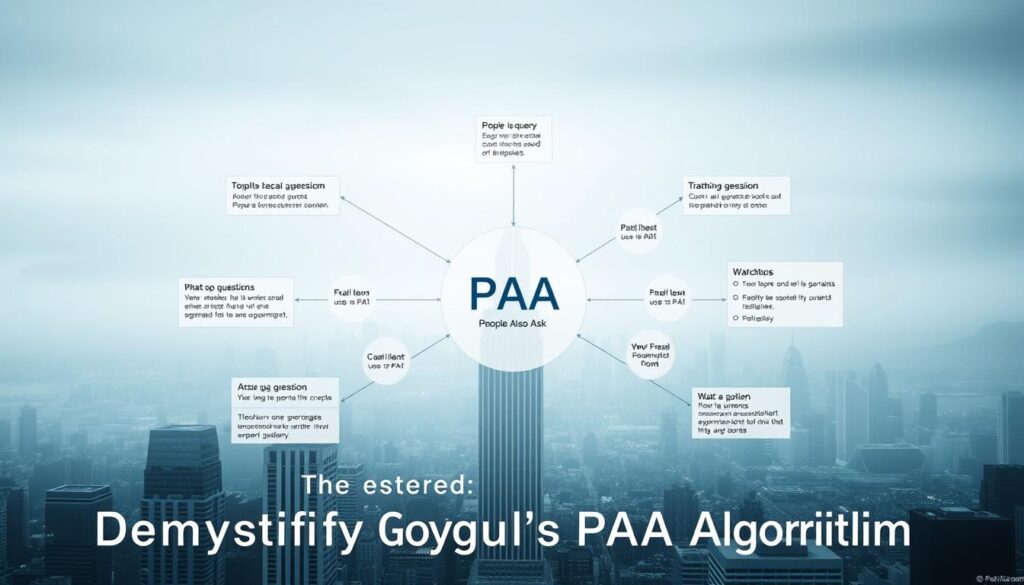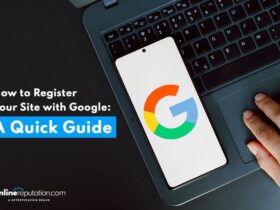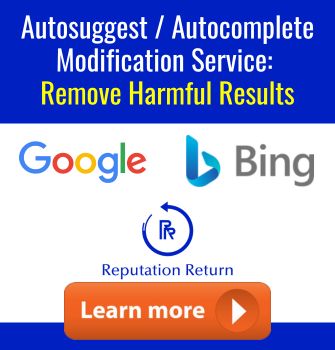Google’s People Also Ask (PAA) boxes have become a powerful tool for enhancing user engagement and search visibility. These boxes appear as accordion-style lists below organic search results, offering quick answers to related questions. For businesses and individuals, optimizing for PAA can be a game-changer, but it requires a strategic approach.
At Reputation Return, we specialize in helping you navigate and modify Google PAA results to protect and enhance your online reputation. Avoiding common pitfalls like keyword stuffing and shallow content is crucial for effective PAA optimization. Our expertise ensures that your content not only meets Google’s standards but also resonates with your audience, driving organic traffic and building authority.
Recent studies highlight the growing importance of PAA. Over 80% of search queries now include PAA features, and these boxes often appear in the top half of search results. By understanding how PAA works and refining your strategy, you can unlock new opportunities for visibility and engagement. Reputation Return’s tailored approach helps you leverage PAA to strengthen your online presence and reputation.
Key Takeaways
- Avoid common SEO mistakes to improve your PAA performance.
- Focus on creating high-quality, user-centric content.
- Reputation Return offers expert solutions for PAA optimization.
- PAA boxes can significantly impact your search visibility and engagement.
- Optimizing for PAA requires a strategic and informed approach.
Introduction to People Also Ask (PAA)
People Also Ask, commonly referred to as PAA, represents a significant advancement in how Google interacts with users. Introduced in 2015, PAA was designed to enhance search interactivity by allowing users to refine their queries without leaving the search results page.
What is People Also Ask?
People Also Ask boxes are interactive, accordion-style lists that appear on Google’s search engine results pages (SERPs). These boxes provide users with additional questions related to their initial search query, along with concise answers sourced from various web pages. The feature aims to cater to users seeking quick insights without needing to click through multiple links.
The Evolution of PAA in Search
Since its inception, PAA has evolved from simple FAQ-style answers to a more sophisticated tool. Today, PAA boxes can display various formats, including lists, tables, and even videos. This evolution reflects Google’s commitment to improving user experience and providing more dynamic content.
| Year | Development | Impact |
|---|---|---|
| 2015 | Introduction of PAA | Enhanced user interaction |
| 2017 | Expansion to include multiple formats | Improved content diversity |
| 2020 | Advanced algorithm integration | More relevant, dynamic responses |
At Reputation Return, we understand the importance of aligning your content strategy with PAA trends to enhance your online presence and reputation. By focusing on user-centric content, businesses can better position themselves to appear in these valuable boxes.
The Impact of PAA on SEO and User Engagement
People Also Ask (PAA) boxes have emerged as a critical component in shaping modern SEO strategies and enhancing user interaction. By addressing common questions related to a search query, PAA boxes provide users with quick, actionable insights, which can significantly boost a website’s visibility and engagement.
Increased Visibility and Organic Traffic
Appearing in PAA boxes can dramatically enhance your website’s organic traffic, even if your site isn’t the top-ranked result. Studies indicate that PAA boxes appear in approximately 85% of all Google searches, offering a prime opportunity to capture user attention. Moreover, content featured in PAA boxes often sees a notable increase in click-through rates, sometimes by over 8%, as users are drawn to the concise and relevant answers provided.
Key Benefits of PAA Optimization:
- Boosts organic visibility and search rankings
- Attracts targeted traffic through relevant questions
- Builds authority and trust with users
- Enhances overall user engagement metrics
At Reputation Return, we recognize the importance of aligning your content strategy with PAA trends to protect and enhance your digital brand integrity. By focusing on user-centric content and advanced SEO strategies, we help businesses leverage PAA boxes to strengthen their online presence and reputation. Learn more about how we can assist you in harnessing the power of PAA for your brand.
Demystifying Google’s PAA Algorithm
Understanding how Google’s People Also Ask boxes work is key to unlocking their potential. These boxes are generated through a complex interplay of machine learning algorithms, user behavior data, and content relevance. By focusing on factual, detailed structured data, Reputation Return helps businesses optimize their presence in these dynamic result areas.
How PAA Boxes Are Generated
The process begins with Google’s algorithm analyzing search patterns and user interactions. The system identifies common questions related to a query and sources answers from high-quality, relevant content. This approach ensures that PAA boxes provide users with accurate and helpful information.
“Google’s PAA algorithm is designed to mirror real user behavior, making it essential for content to address actual user needs.”
Dynamic Interaction and Query Refinement
As users engage with PAA boxes, their interactions refine future queries. This dynamic process allows Google to continuously improve the relevance of its results. By aligning your content with these evolving patterns, you can enhance your chances of appearing in these valuable boxes.
| Factor | Role in PAA Generation |
|---|---|
| Machine Learning | Analyzes user behavior and content patterns |
| Content Relevance | Ensures answers are accurate and helpful |
| User Interaction | Refines query results for better relevance |

Addressing paa optimization mistakes
When refining your strategy for Google’s People Also Ask (PAA) boxes, it’s crucial to recognize and avoid common pitfalls that can hinder your progress. At Reputation Return, we emphasize that understanding these mistakes is essential for effectively managing PAA outcomes and safeguarding your online reputation.
Common Pitfalls in PAA Optimization
Several errors can undermine your efforts to optimize for PAA boxes. Overloading your content with keywords, known as keyword stuffing, is a frequent mistake that can harm your SEO performance. Similarly, creating shallow content that lacks depth and fails to address user queries comprehensively can reduce your chances of appearing in PAA boxes. Ignoring PAA altogether is another oversight, as it can limit your visibility in search results.
| Mistake | Impact |
|---|---|
| Keyword Stuffing | Decreases content quality and SEO performance |
| Shallow Content | Fails to engage users and provide value |
| Ignoring PAA | Limits search visibility and organic traffic |
Avoiding these mistakes requires a strategic approach. Conduct a thorough audit of your content strategy to identify and rectify these issues. By focusing on user-centric content and advanced SEO techniques, Reputation Return helps businesses refine their PAA strategy and enhance their online presence. Don’t let these pitfalls hold you back—adopt meticulous, research-backed practices to protect your brand and drive success.
Crafting High-Quality Content for PAA Success
Creating content that resonates with users is at the heart of achieving success with People Also Ask (PAA) boxes. High-quality, detailed content not only answers user queries effectively but also enhances your website’s visibility and engagement.
Answering User Queries Effectively
Users turn to search engines for quick, accurate answers. To leverage the PAA feature, your content must address their needs comprehensively. Focus on creating user-centric content that provides clear, concise answers to common questions.
At Reputation Return, we emphasize the importance of structured content. Use clear headings, bullet points, and structured data to make your content easily digestible. This approach not only improves readability but also helps search engines understand your content better, increasing your chances of appearing in PAA boxes.
- Employ clear headings to guide users through your content.
- Use bullet points for quick, scannable information.
- Incorporate structured data to enhance search engine understanding.
Quality content is the cornerstone of a successful PAA strategy. By focusing on detailed, user-focused content, you can improve your online presence and build trust with your audience. Learn more about how Reputation Return can help you craft content that drives results by visiting our resource page.
Enhancing PAA Strategy with Structured Data
Structured data plays a pivotal role in refining your approach to Google’s People Also Ask (PAA) feature. At Reputation Return, we specialize in leveraging schema markup and other forms of structured data to enhance your online presence and reputation. By organizing your content with precise formatting, you make it easier for search engines to interpret and feature your information in PAA boxes.
Implementing structured data not only improves how Google understands your content but also increases the likelihood of your answers appearing in PAA results. This approach ensures your content is both user-friendly and search engine-friendly, aligning with Google’s algorithms that prioritize clarity and relevance.
- Schema markup helps Google better understand your content, making it more likely to appear in PAA boxes.
- Structured data improves content clarity and relevance, enhancing user engagement and search performance.
- Proper formatting ensures your information is easily accessible and digestible for both users and search engines.
By integrating structured data into your content strategy, you can significantly boost your visibility and reputation. At Reputation Return, we offer tailored solutions to help you implement these strategies effectively, ensuring your content stands out and resonates with your audience.
Leveraging Reputation Return for PAA Optimization
At Reputation Return, we specialize in helping businesses strategically integrate PAA optimization into their broader SEO strategies. Our expertise lies in protecting and enhancing your online reputation through tailored solutions that align with Google’s dynamic features.
Integrating Reputation Return into Your Strategy
Our approach begins with a comprehensive audit of your current content strategy. We identify gaps and opportunities to refine your presence in PAA boxes. By focusing on user-centric content and advanced SEO techniques, we help businesses secure top spots in these valuable boxes.
Benefits for Business Visibility
The integration of Reputation Return’s methods offers tangible benefits for your business. Enhanced reputation management, improved organic positioning, and increased user trust are just a few outcomes. Our strategies drive lasting positive results in online search.
- Enhanced reputation management to secure top spots in PAA boxes
- Improved organic positioning and user trust
- Strategic integration for lasting positive outcomes
| Service | Benefit |
|---|---|
| Content Strategy Audit | Identifies gaps and opportunities for PAA integration |
| User-Centric Content Creation | Aligns with Google’s PAA features for better visibility |
| Advanced SEO Techniques | Secures top spots in PAA boxes |
Reputation Return offers a free confidential consultation to discuss your needs and provide tailored solutions. Let us help you protect and elevate your business reputation in PAA results.
Tools and Techniques to Identify PAA Opportunities
Identifying the right opportunities to appear in People Also Ask (PAA) boxes is crucial for enhancing your search visibility. At Reputation Return, we emphasize the importance of using advanced keyword research tools to uncover these opportunities effectively.
Utilizing Keyword Research Tools
Keyword research tools are essential for discovering trending questions and PAA opportunities. Platforms like AlsoAsked.com specialize in identifying query variations that trigger PAA features, helping you align your content with what users are searching for.
- These tools reveal competitive content gaps, allowing you to target unanswered questions.
- By analyzing user search behavior, you can create content that directly addresses their needs.
- Select tools that offer detailed query analysis to refine your content strategy.
Early identification of keyword opportunities can significantly boost your organic rankings. At Reputation Return, we recommend a step-by-step approach to leveraging these insights for optimal results.
By integrating these tools and techniques into your strategy, you can enhance your online presence and drive meaningful engagement. Let us help you unlock the full potential of PAA opportunities for your brand.
Measuring PAA Performance and Adapting Strategies
Measuring the effectiveness of your People Also Ask (PAA) strategy is crucial for maintaining strong search presence and protecting your digital reputation. At Reputation Return, we emphasize that tracking key metrics such as click-through rates, engagement, and position in PAA boxes provides actionable insights for continuous improvement.
Key metrics to monitor include:
- Click-through rates (CTR) to gauge user interest and content relevance
- Engagement metrics like dwell time and bounce rates to assess content value
- Impression share to measure how often your content appears in PAA boxes
“Regular performance reviews and data-driven decisions are essential for refining your PAA strategy and ensuring your digital reputation remains strong.”
By leveraging analytics tools, you can track user interactions and content effectiveness in PAA placements. This data helps identify areas for improvement, allowing you to adapt your strategy and maintain a competitive edge in search results. For instance, higher engagement rates are often linked to PAA boxes appearing in top SERP positions, highlighting the importance of visibility.
At Reputation Return, we recommend updating and refining your content based on performance data to promote a proactive SEO approach. This ensures your content remains relevant and continues to resonate with your audience. By consistently measuring and adjusting your strategy, you can protect and enhance your online reputation for the long term.

Learn more about how Reputation Return can help you refine your PAA strategy and protect your digital brand by visiting our resource page.
Conclusion
In today’s dynamic digital landscape, mastering Google’s People Also Ask (PAA) feature is essential for businesses aiming to enhance their online presence and reputation. By avoiding common pitfalls and leveraging proven strategies, companies can unlock the full potential of PAA to drive engagement and visibility.
Key takeaways include:
- Avoiding common mistakes like keyword stuffing and shallow content creation.
- Focusing on high-quality, user-centric content that addresses real user needs.
- Utilizing structured data and continuous performance measurement to refine strategies.
At Reputation Return, we specialize in helping businesses navigate the complexities of PAA. Our expertise ensures that your content not only meets Google’s standards but also resonates with your audience, driving organic traffic and building authority. By integrating our tailored solutions, you can protect and enhance your digital reputation while maintaining a competitive edge in search results.
Don’t miss the opportunity to secure a dominant position in PAA. Contact us today for a free confidential consultation and let us help you harness the power of PAA to elevate your brand’s online presence.
FAQ
What are the most common mistakes to avoid when optimizing for People Also Ask?
Common errors include keyword stuffing, ignoring user intent, and not leveraging structured data. Focus on natural content that answers user queries clearly and concisely.
How does People Also Ask impact my website’s SEO?
PAA can enhance your visibility by appearing in search results, driving organic traffic, and improving user engagement. Optimize your content to match related questions and queries.
Can I influence the questions that appear in the People Also Ask box?
While you can’t control Google’s algorithm, creating high-quality, relevant content that answers user queries can increase your chances of appearing in PAA boxes.
What tools can help identify PAA opportunities?
Tools like Google Search Console, SEMrush, and Ahrefs can help you find related questions and keywords. These insights can guide your content strategy.
How often should I update my content for PAA optimization?
Regular updates are essential. Refresh your content to keep up with changing user queries and search trends, ensuring your answers remain relevant and accurate.
Can PAA optimization improve my website’s reputation?
Yes, by providing accurate and helpful answers, you can enhance your brand’s authority and trustworthiness, contributing to a positive online reputation.
How do I measure the success of my PAA optimization efforts?
Track metrics like increased organic traffic, higher click-through rates, and improved search rankings. Use analytics tools to monitor your performance regularly.
Is it worth investing time in PAA optimization?
Absolutely. PAA offers a unique opportunity to capture more visibility in search results, engage users, and drive traffic to your site. It’s a valuable SEO strategy.
Can Reputation Return help with PAA optimization?
Yes, Reputation Return specializes in online reputation management and can help you craft content that aligns with PAA opportunities, improving your digital presence.
How do I get started with PAA optimization?
Begin by conducting keyword research, analyzing competitor content, and creating informative answers to common questions in your niche. Focus on clarity and relevance.















